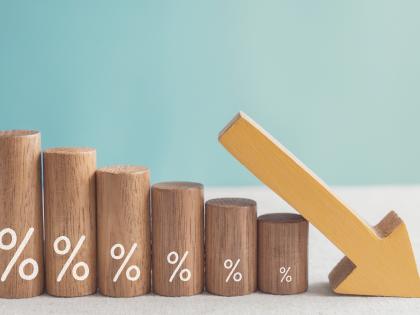What’s Next for Commercial Real Estate?
Four emerging trends reshaping the industry in 2025
After several challenging years contending with the impacts of a global pandemic, the commercial real estate market finally seems to be healing. As noted in the latest Emerging Trends in Real Estate report from PwC and the Urban Land Institute, the Fed's 50-basis-point cut in September and subsequent 25-basis-point cut in November have generated some optimism in the CRE community that we are entering a new expansionary phase in the real estate cycle. Here are four of the top emerging trends taking shape as a result.
1. Interest Rates and Capital Cost Concerns Have Eased, but Still Remain
In the aftermath of the global financial crisis of 2007-2008, the Fed attempted to revive the economy by lowering the federal funds rate to near zero. What followed was nearly a decade in which cheap debt became a way of life. However, starting in the spring of 2022, with inflation surging, the federal funds rate was increased 11 times, pushing the rate from zero to over 5 percent, bringing real estate investment activity to a near standstill.
Reflecting on the market today, interest rates and cost of capital remain among the top concerns of respondents to the PwC Emerging Trends in Real Estate survey, but those concerns have eased since last year. While respondents largely agree that the rate cuts so far are not enough to alter deal economics fundamentally, the monetary policy movements have still injected optimism into the market. In addition, more than 80% believe that commercial mortgage rates will decrease in 2025, with 75% believing those rates will continue to decrease over the next five years. As an industry that relies heavily on leverage to get deals done, signs of lower-costing debt bode well for the future and will support more robust deal volume. That said, the Fed’s future decisions on rate cuts will depend on how inflation and the overall economic outlook evolve.
2. Acquisitions, Refinancing and Development Markets Improving
The acquisitions, refinancing and development markets are slowly starting to heal, the Emerging Trends report noted, pointing to steady improvement in liquidity and more bids in the market, as well as tighter prices and debt spreads. Industry participants are also optimistic about debt conditions ahead, with lending expected to grow by 24% in 2025, indicating a full recovery to pre-pandemic levels and further signaling that normalization and stability are on the horizon.
Another key factor market participants are looking at is the stabilization of recent real estate price declines. Cap rates began rising when prices peaked in mid-2022 and continued increasing until plateauing in early 2024. The most recent figures suggest prices might be turning positive again, although this may simply reflect that higher-quality real estate is accounting for a larger share of transactions.
3. Occupied Space Now Exceeds Pre-Pandemic Levels in Most Sectors
The pandemic created significant changes in how tenants use space, and where. There are fewer office workers commuting to the workplace, more consumers shopping online and more goods being stored in warehouses. However, despite these changes, overall demand for space has more than recovered from the pandemic and remains robust across most property types, with the exception of office.
When looking at the future of the retail market, survey respondents indicated that location is key. While newness is a significant priority for some property types like office, retail spaces tend to derive much of their value and demand based on their location. Frequently, older retail centers command the best locations, preventing newer entrants from gaining a foothold and making them more attractive to investors.
In the industrial sector, net absorption has been positive, meaning more space is occupied than ever before. Yet demand has not kept pace with new supply, leading to an increase in vacant space. This has given more negotiating power to tenants, who are increasingly seeking spaces with more modern features such as high energy efficiency, LED lighting and higher clear heights. However, this “flight to quality” trend should abate slightly as the pipeline for new product slows and the supply/demand dynamics balance out.
4. There Is Less Movement Due to the High Costs of Relocation
The pandemic not only created a shift in the demand for commercial property, but also shifted where people want to live and work. After years of increasing interstate migration, many areas are experiencing slower population growth or even outright population losses due to soaring home prices, fewer renters having the ability to transition to home ownership, and fewer households relocating for new jobs.
The report notes that climate change is also becoming a greater factor in location decisions. The report points to a Freddie Mac analysis that shows natural disaster concerns have prompted one in seven households to consider other places to live. Many commercial properties are also at risk of damage from natural disasters and commercial property owners are facing increasing insurance premiums as a result.
Conclusion
As the real estate market transitions into a new cycle in 2025, we remain cautiously optimistic for the future. With change comes opportunity, and we’re excited to see how the landscape evolves as we enter a phase of recovery and renewal. With more than 50 years of experience operating in all market cycles, we’re well positioned to continue helping companies unlock otherwise illiquid capital from their real estate assets. If you're interested in learning more, contact us today.

You May Also Like:
Three Strategic Uses of Sale-leaseback Capital for CFOs
There are several reasons businesses of all sizes may choose to monetize their owned real estate through a sale-leaseback. A sale-leaseback is an effective financing tool to unlock seemingly illiquid...
Top 3 Financial Strategies for CFOs to Fund Business
Inflation is currently at 8.2% year to year, way above its 2% benchmark. The Fed has increased interest rates three times in a row to try and keep inflation under control, with promises of...